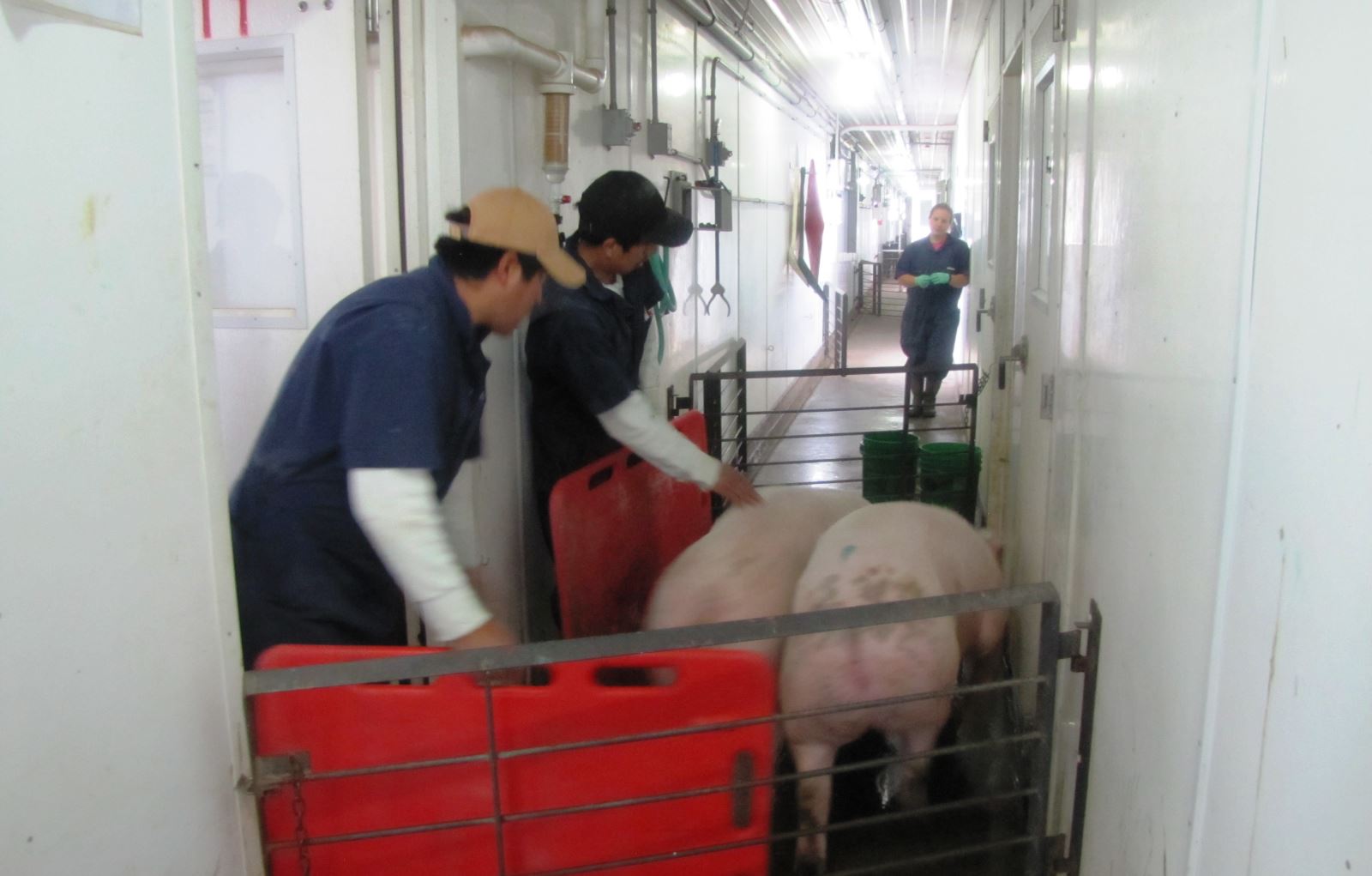posted on Monday, October 31, 2016 in AMVC Employee Blog

Studying behavior was always one of my favorite topics in college. I find it fascinating that you can predict how an animal will respond to a given situation just by knowing their tendencies and instincts. Reading some of Dr. Temple Grandin’s work several years ago was one of my first exposures to the field, and since then I’ve come to rely on behavior to help me with my work on the farm.
I use my knowledge of behavior every day; whether we’re walking sows from one barn to another, determining whether she’s ready to farrow (begin having her babies), or deciding how many sows we should put into a group together. There are several things I look for and try to play to my advantage in order to keep the sows calm, stress free and moving easily, so none of our employees or animals are at an increased risk of injury.
Moving sows from one barn to another or even just one pen to another can be a challenge. Pigs are very curious animals, and will stop to check out any new things they find. To prevent big backups and to keep sows from becoming frightened we make sure to prep the walkways before moving any animals. This can include a lot of little details like: setting up any gates properly, securing any moving/flapping objects, turning on lights to keep from having shadowy areas, and shutting windows and doors to keep drafts from blowing directly onto the sows. We know loud or startling noises will make a sow move away, so we use shakers to get them going without having to use any physical force. There’s an area known as a “flight zone” which is essentially her “bubble”, if we step into the bubble on her left the sow is going to move to the right until you are no longer inside of her flight zone. By knowing this, we can then not only get the animals to move, but to move in the direction we want them to. It is much less stressful than trying to physically herd them, as well as, much safer for both the caretakers and sows.
One of the most fascinating things about pigs (in my opinion) is that when they are preparing to give birth (farrow) they will actually build a huge nest of sticks, leaves and grasses where their litter will be born and stay while they’re young. It’s one of the more interesting things I’ve seen, even without having sticks and leaves available indoors, the sows will still rooting around with their noses and will carry out this behavior in the days leading up to the delivery. I work mostly with the sows while they are farrowing, so I see this happen a lot. The sow will start to get agitated and bang around on her feeder, stand up and lay back down repeatedly. When these behaviors start happening we know she’ll have her babies sometime in the next 24 hours. It’s like clockwork and it’s amazing to me that they have this instinctive action.
All of the employees on our farms are PQA (Pork Quality Assurance) certified and have learned the proper ways to handle and move animals. It’s very important to us, and to all pig farmers, that we do everything we can to make our pigs lives as comfortable and stress free as possible. Utilizing what we know about their behavior helps us to create a more ideal environment, so that our animals stay safe and happy.